Healthy Liver Levels: Understanding Normal Results, High and Low Levels, Symptoms, and Causes
What are healthy liver levels. How do high and low liver enzyme levels affect health. What symptoms indicate liver problems. What causes abnormal liver test results.
Understanding Liver Function Tests and Their Importance
Liver function tests are crucial diagnostic tools used to assess the health and functionality of the liver. These tests measure various enzymes, proteins, and other substances in the blood that reflect liver activity and potential damage. By analyzing these biomarkers, healthcare professionals can detect liver disorders, monitor disease progression, and evaluate treatment effectiveness.
The liver, being the largest internal organ, plays a vital role in numerous bodily functions, including:
- Protein production
- Detoxification of harmful substances
- Metabolism of drugs and nutrients
- Production of bile for fat digestion
- Storage of essential vitamins and minerals
Given its importance, maintaining healthy liver levels is essential for overall well-being. Standard liver tests typically include measurements of enzymes like alanine aminotransferase (ALT), aspartate aminotransferase (AST), and alkaline phosphatase (AP), as well as proteins like albumin and bilirubin.
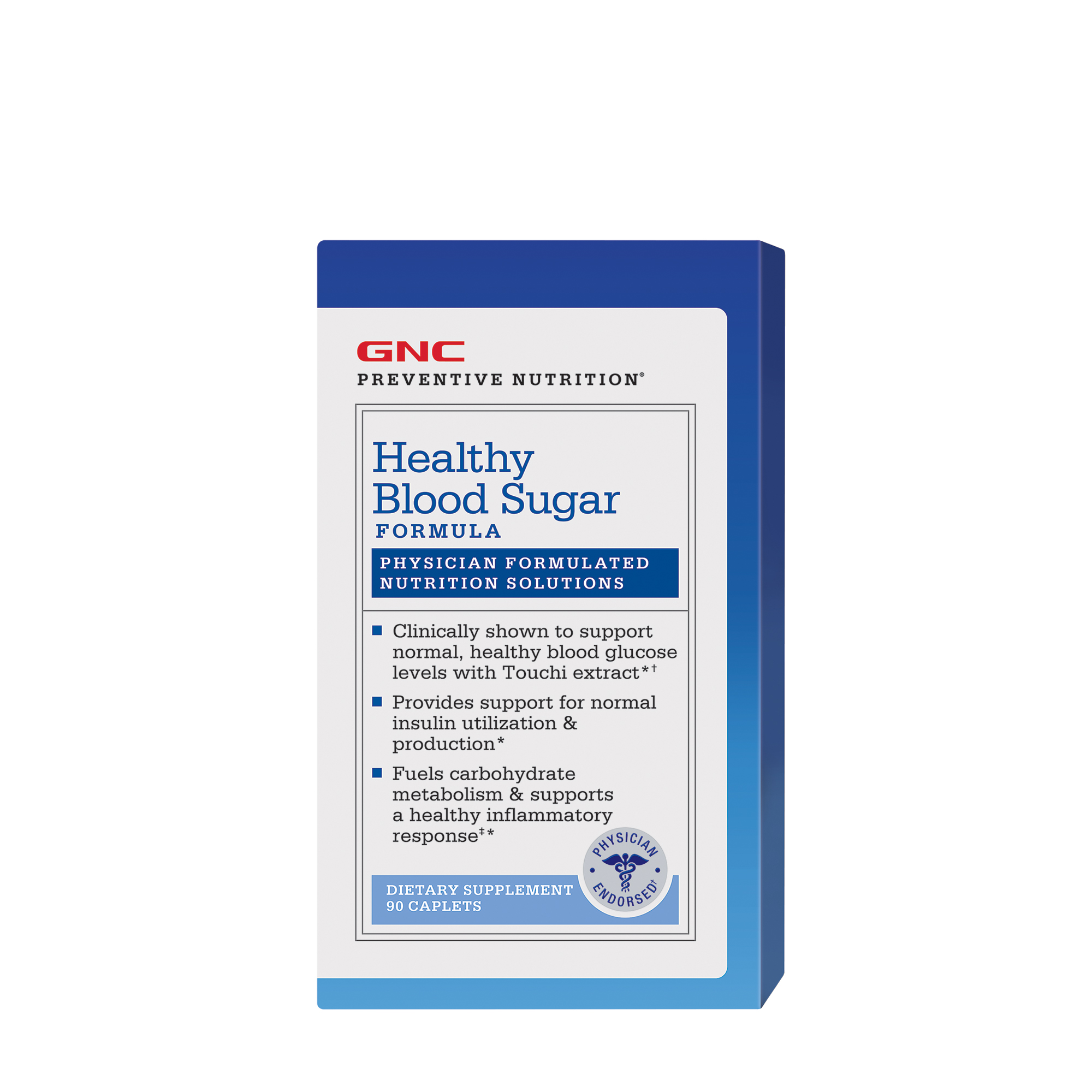
Common Liver Function Tests and Their Significance
Understanding the various liver function tests and their implications is crucial for interpreting results accurately. Here are some of the most common tests:
Alanine Aminotransferase (ALT)
ALT is an enzyme primarily found in liver cells. Elevated levels often indicate liver damage or inflammation. What is considered a normal ALT level? For women, healthy levels are typically below 19 U/L, while for men, they are below 30 U/L. However, laboratory reference ranges may vary.
Aspartate Aminotransferase (AST)
AST is present in various tissues, including the liver, heart, and muscles. Elevated AST levels can indicate liver damage but are less specific than ALT. The AST/ALT ratio can provide additional insights into the nature of liver problems.
Alkaline Phosphatase (AP)
AP is an enzyme found in several organs, including the liver, bones, and intestines. Elevated levels may suggest bile duct obstruction or certain bone disorders. How does AP differ from other liver enzymes? AP is particularly useful in identifying cholestatic liver diseases.

Gamma-Glutamyl Transferase (GGT)
GGT is sensitive to alcohol consumption and certain medications. Elevated levels can indicate liver or biliary tract disease. GGT is often used in conjunction with other tests to provide a more comprehensive liver health assessment.
Bilirubin
Bilirubin is a product of red blood cell breakdown. Elevated levels can cause jaundice and may indicate liver dysfunction or certain blood disorders. What are the different types of bilirubin measured? Tests typically measure both conjugated (direct) and unconjugated (indirect) bilirubin.
Albumin
Albumin is a protein produced by the liver. Low levels can indicate advanced liver disease or other conditions affecting protein production or retention. How does albumin relate to overall liver function? Albumin levels reflect the liver’s synthetic capacity and are often used to assess the severity of chronic liver diseases.
Interpreting Liver Function Test Results
Interpreting liver function test results requires consideration of various factors, including age, gender, medical history, and lifestyle. It’s important to note that being outside the “normal” range doesn’t always indicate illness, and conversely, being within the normal range doesn’t guarantee perfect health.

When interpreting results, healthcare providers often consider:
- The pattern of enzyme elevations (hepatocellular vs. cholestatic)
- The magnitude of elevation
- The duration of abnormal results
- The presence of other symptoms or risk factors
For instance, mild elevations in liver enzymes (less than 2-3 times the upper limit of normal) may warrant repeat testing before extensive workup. Conversely, significant elevations or persistent abnormalities typically require further investigation.
Causes of Abnormal Liver Function Test Results
Abnormal liver function test results can stem from various causes, ranging from temporary lifestyle factors to serious liver diseases. Some common causes include:
Hepatocellular Causes
- Viral hepatitis (e.g., hepatitis A, B, C)
- Alcoholic liver disease
- Nonalcoholic fatty liver disease (NAFLD)
- Drug-induced liver injury (DILI)
- Autoimmune hepatitis
Cholestatic Causes
- Primary biliary cholangitis (PBC)
- Primary sclerosing cholangitis (PSC)
- Bile duct obstruction
- Certain medications
Other Causes
- Hemolysis (affecting bilirubin levels)
- Muscle disorders (affecting AST and ALT)
- Bone diseases (affecting alkaline phosphatase)
- Thyroid disorders
- Celiac disease
It’s crucial to remember that abnormal liver function tests are not diagnostic in themselves but rather indicate the need for further evaluation. The specific pattern of abnormalities, along with clinical history and additional tests, helps in determining the underlying cause.

Symptoms Associated with Liver Dysfunction
While abnormal liver function tests may be detected in asymptomatic individuals, certain symptoms can indicate liver problems. These may include:
- Jaundice (yellowing of skin and eyes)
- Fatigue and weakness
- Abdominal pain or swelling
- Nausea or loss of appetite
- Dark urine or pale stools
- Itchy skin
- Easy bruising or bleeding
When should you seek medical attention for potential liver problems? If you experience persistent symptoms, especially jaundice or unexplained abdominal pain, it’s important to consult a healthcare provider promptly.
Maintaining Healthy Liver Levels
Maintaining healthy liver levels involves a combination of lifestyle choices and preventive measures. Here are some strategies to support liver health:
- Limit alcohol consumption: Excessive alcohol intake is a leading cause of liver damage.
- Maintain a healthy diet: A balanced diet rich in fruits, vegetables, and whole grains supports liver function.
- Exercise regularly: Physical activity helps prevent fatty liver disease and promotes overall liver health.
- Avoid unnecessary medications: Use medications, especially acetaminophen, as directed and avoid combining them with alcohol.
- Protect against hepatitis: Get vaccinated for hepatitis A and B, and practice safe sex and hygiene to prevent hepatitis C.
- Manage weight: Obesity is a risk factor for nonalcoholic fatty liver disease.
- Control other health conditions: Manage conditions like diabetes and high cholesterol, which can affect liver health.
How often should liver function tests be performed for preventive care? For most healthy adults, routine liver function tests are not necessary. However, individuals with risk factors or chronic conditions may require regular monitoring as advised by their healthcare provider.
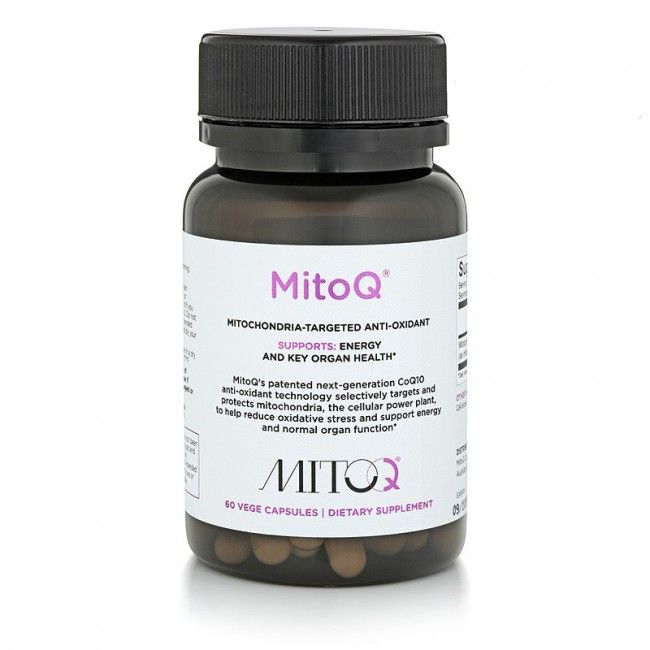
Advanced Liver Function Assessment
In some cases, standard liver function tests may not provide sufficient information, necessitating more advanced assessments. These may include:
Imaging Studies
- Ultrasound
- Computed tomography (CT) scan
- Magnetic resonance imaging (MRI)
- Magnetic resonance cholangiopancreatography (MRCP)
Specialized Blood Tests
- Viral hepatitis serology
- Autoimmune markers (e.g., antimitochondrial antibodies for PBC)
- Alpha-fetoprotein (for liver cancer screening)
- Ceruloplasmin (for Wilson’s disease)
Liver Biopsy
A liver biopsy involves removing a small sample of liver tissue for microscopic examination. When is a liver biopsy necessary? It may be recommended when noninvasive tests are inconclusive or to assess the severity of certain liver diseases.
Elastography
Techniques like FibroScan use ultrasound waves to assess liver stiffness, providing information about fibrosis and cirrhosis without invasive procedures.
These advanced assessments help in diagnosing specific liver conditions, staging disease progression, and guiding treatment decisions. They are typically performed by specialists in hepatology or gastroenterology.
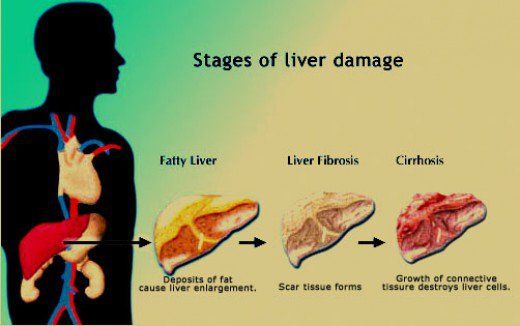
The Future of Liver Function Testing
As medical science advances, new approaches to liver function testing are emerging. These developments aim to improve accuracy, provide earlier detection, and offer more personalized assessments of liver health. Some promising areas include:
Biomarker Discovery
Researchers are identifying new biomarkers that may offer more specific or sensitive indicators of liver health. How might these new biomarkers change liver disease diagnosis? They could potentially detect liver damage earlier or differentiate between different types of liver diseases more accurately.
Non-Invasive Fibrosis Assessment
Advanced imaging techniques and blood-based tests are being developed to assess liver fibrosis without the need for biopsy. These methods could provide a safer and more convenient way to monitor liver disease progression.
Genetic Testing
Understanding genetic factors that influence liver health and disease susceptibility may lead to more personalized approaches to liver function assessment and treatment.

Artificial Intelligence in Diagnostics
Machine learning algorithms are being developed to analyze complex patterns in liver function tests and other clinical data, potentially improving diagnostic accuracy and predicting disease outcomes.
As these technologies evolve, they promise to enhance our ability to detect, diagnose, and manage liver diseases more effectively. However, it’s important to note that while these advancements are exciting, they will likely complement rather than replace traditional liver function tests in the near future.
In conclusion, understanding liver function tests and maintaining healthy liver levels are crucial aspects of overall health. By recognizing the significance of these tests, interpreting results correctly, and adopting liver-friendly lifestyle habits, individuals can take proactive steps towards preserving their liver health. As diagnostic capabilities continue to advance, we can look forward to even more precise and personalized approaches to liver care in the years to come.

Standard liver tests – PMC
Clin Liver Dis (Hoboken). 2016 Jul; 8(1): 13–18.
Published online 2016 Jul 26. doi: 10.1002/cld.562
, M.D.
1
and , M.D.
1
,
2
,
3
Author information Article notes Copyright and License information Disclaimer
Watch a video presentation of this article
Watch the interview with the author
Abbreviations
- AIH
- autoimmune hepatitis
- ALT
- alanine aminotransferase
- AMA
- antimitochondrial antibodies
- AP
- alkaline phosphatase
- AST
- aspartate aminotransferase
- DILI
- drug‐induced liver injury
- ERCP
- endoscopic retrograde cholangiopancreatography
- gGT
- γ‐glutamyl transpeptidase; LIT, liver injury test
- MELD
- Model for End‐Stage Liver Disease
- MRCP
- magnetic resonance cholangiopancreatography
- NASH
- nonalcoholic steatohepatitis
- PBC
- primary biliary cholangitis
- ULN
- upper limit of normal
The liver is the largest organ in the body and arguably the most important organ for protein production and detoxification, both of which are facilitated by a myriad of enzymes. Both the detection of enzymes released from liver cells and proteins produced by the liver and released into the blood can be used to analyze liver health.
Both the detection of enzymes released from liver cells and proteins produced by the liver and released into the blood can be used to analyze liver health.
Standard liver tests (Tables and ) that assess injury to the liver include alanine aminotransferase (ALT), aspartate aminotransferase (AST), and alkaline phosphatases (APs). The excretory function of the liver can be estimated by bilirubin and the metabolic function of the liver by clotting tests and albumin.
Table 1
Standard Liver Tests, Their Sources of Origin, and Abnormalities
| Parameter | Origin | Associated Disease |
|---|---|---|
| AST | Liver, skeletal muscle, cardiac muscle, red blood cells, brain, pancreas, lungs | Hepatocellular injury of any cause, myopathies, myocardial infarct, hemolysis |
| ALT | Liver, kidneys, skeletal muscle | Hepatocellular injury of any cause, myopathies |
| AP | Liver, bone, placenta, kidneys, intestines | Cholestatic liver disease; sarcoidosis; pregnancy; lymphoma; bone, kidney, and intestinal diseases |
| γ‐Glutamyl transferase | Biliary epithelial cells, kidneys, pancreas, prostate | Biliary or pancreatic disease, myocardial infarct, renal diseases, chronic lung disease, diabetes |
| Conjugated bilirubin | Hemolysis, insufficient excretion from the liver | Severe liver injury from any cause Rotor syndrome, Dubin‐Johnson syndrome |
| Unconjugated bilirubin | Hemolysis | Hemolysis, Gilbert syndrome, Crigler‐Najjar syndrome |
| Albumin | Produced in hepatocytes | Low in nephrotic syndrome, malnutrition, protein‐losing enteropathy |
| Prothrombin time | Clotting factors produced in hepatocytes | Prolonged in liver disease, vitamin K deficiency, fat malabsorption, pancreatic insufficiency |
Open in a separate window
Table 2
Elevation of Liver Chemistries With Liver Diseases
| Test | Hepatocellular | Cholestatic | Half‐life (t 1/2) |
|---|---|---|---|
| AST | +++ | N/+ | 17 hours |
| ALT | +++ | N/+ | 47 hours |
| AP | Normal/mild | ++++ | 7 days |
| gGT | ++/+++ | ++++ | 26 days (for abstinence) |
| Total bilirubin | N/++ | N/+++ | Depends on albumin binding |
| Albumin | ++ (chronic) | N | 20 days |
| Prothrombin time | ++ | N |
Open in a separate window
Tests that describe injury of the liver such as aminotransferases and AP have historically been mislabeled liver injury tests (LIT). In contrast, standard tests such as albumin, bilirubin, and prothrombin time are useful in evaluating liver function.
In contrast, standard tests such as albumin, bilirubin, and prothrombin time are useful in evaluating liver function.
The pattern of elevation of the different enzymes can be used to discriminate hepatocellular from cholestatic or mixed injury; AST and ALT are more elevated in patients with hepatocellular injury, whereas AP and γ‐glutamyl transpeptidase (gGT) are more elevated in cholestatic injury.
Normal values for laboratory results are defined as those found in 95% of a population. Thus, 2.5% of a population will be above and below the normal values, respectively. But being outside the normal does not immediately reflect illness; that is, a bilirubin level below normal has no clinical consequences. Contrarily, being within the normal value does not necessarily reflect a healthy state. In that regard it has been suggested to use an upper limit of 19 and 30 U/L for ALT for women and men, respectively,1 to reflect healthy values. This also fits the observed increased mortality in individuals with ALT values that are normal but above the healthy range. 2 Thus, liver transaminases likely will be described as healthy (≤19 U/L for women and ≤30 U/L for men) and normal values (i.e., <65 U/L). The normal values will depend on the specific laboratory population, thus limiting standardization.
2 Thus, liver transaminases likely will be described as healthy (≤19 U/L for women and ≤30 U/L for men) and normal values (i.e., <65 U/L). The normal values will depend on the specific laboratory population, thus limiting standardization.
For some assessments such as drug safety, the times upper limit of normal (ULN) is established to define safety margins. Substituting the healthy range values for normal range value will therefore need to be carefully addressed in the future.
Mild abnormalities in liver‐related tests may warrant repeat testing before a more extensive workup is initiated. Abnormal liver chemistries may occur in 1% to 4% of the asymptomatic population.3, 21
Transaminases are involved in transferring the amino groups of aspartate and alanine to ketoglutaric acid. Although ALT is more liver specific, elevated ALT levels are also reported in myopathies (Table ).4, 5
Table 3
Disease Association According to Aminotransferases Elevation Pattern
| AST Predominant | ALT Predominant |
|---|---|
| Alcohol‐related liver injury | Chronic hepatitis C |
| Cirrhosis | Chronic hepatitis B |
| Hemolysis | Acute viral hepatitis (types A‐E, herpes simplex virus, Epstein‐Barr virus, cytomegalovirus) |
| Myopathy | Steatosis/steatohepatitis |
| Thyroid disease | Hemochromatosis |
| Strenuous exercise | Medications/toxins |
| Autoimmune hepatitis | |
| Wilson’s disease | |
| Celiac disease |
Open in a separate window
Hepatocyte injury results in altered cell membrane permeability causing the excessive leakage of transaminases. Periportal hepatocytes (zone 1) have relatively more ALT, whereas the hepatocytes near the central vein (zone 3) have more AST (Fig. ). Thus, causes of hepatic inflammation that are predominantly involving zone 1 such as viral and autoimmune hepatitis result in predominantly ALT elevation. In contrast, ischemic or toxic insults are more likely to involve zone 3, causing a predominance of AST elevation. AST/ALT ratio, also known as De Ritis ratio, is useful in assessing various liver diseases.6 In alcoholic hepatitis, AST is usually higher than ALT, with the AST/ALT ratio reaching 2:1. In acute viral hepatitis, ALT levels are usually higher than AST. High AST/ALT ratio (>1.5) in acute viral hepatitis may be indicative of potential fulminant course.9 AST/ALT ratio greater than 1.0 in chronic liver diseases may be indicative of advanced fibrosis.8, 9 AST and ALT are also used together with platelets to assess the likelihood of advanced liver fibrosis and are part of the aspartate aminotransferase‐to‐platelet ratio index (APRI) and FIB‐4 score:
Periportal hepatocytes (zone 1) have relatively more ALT, whereas the hepatocytes near the central vein (zone 3) have more AST (Fig. ). Thus, causes of hepatic inflammation that are predominantly involving zone 1 such as viral and autoimmune hepatitis result in predominantly ALT elevation. In contrast, ischemic or toxic insults are more likely to involve zone 3, causing a predominance of AST elevation. AST/ALT ratio, also known as De Ritis ratio, is useful in assessing various liver diseases.6 In alcoholic hepatitis, AST is usually higher than ALT, with the AST/ALT ratio reaching 2:1. In acute viral hepatitis, ALT levels are usually higher than AST. High AST/ALT ratio (>1.5) in acute viral hepatitis may be indicative of potential fulminant course.9 AST/ALT ratio greater than 1.0 in chronic liver diseases may be indicative of advanced fibrosis.8, 9 AST and ALT are also used together with platelets to assess the likelihood of advanced liver fibrosis and are part of the aspartate aminotransferase‐to‐platelet ratio index (APRI) and FIB‐4 score:
APRI: AST level (/ULN) / platelet counts (109/L) × 100
FIB‐4 score: [age (years) × AST (U/L)]/{platelets (109/L) × [ALT (U/L)]1/2}.

Open in a separate window
Zone 1 has more ALT than AST, and zone 3 has more AST than ALT. Autoimmune and viral hepatitis predominantly involve zone 1 (ALT > ALT). Ischemic and toxic events, heart failure, and Budd‐Chiari syndrome predominantly involve zone 3 (AST > ALT). AP is mostly present on basolateral membrane of hepatocytes lining the bile canaliculi. Reproduced from PLoS Biology. Copyright 2005, Frevert et al.
Aminotransferases are normal or only mildly elevated in obstructive jaundice except in acute phase of biliary obstruction caused by the passage of gallstone into the common bile duct.10 In this case, aminotransferases may reach values greater than 1000, decreasing quickly, with liver test rapidly evolving into those of typical cholestasis or normalizing completely.
Aminotransferases levels also vary with age, sex, race, and body mass index.11 Levels are found to be higher in obese patients and lower in dialysis patients,12 whereas ALT levels are noted to decline with weight loss.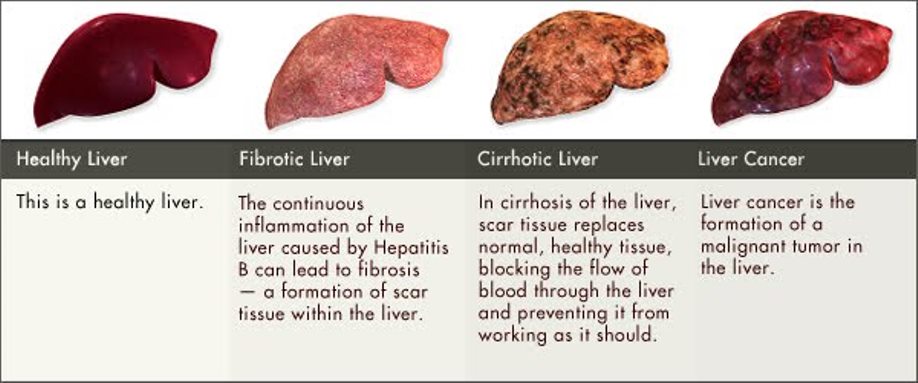 13 AST levels are 15% higher in African American males as compared with Caucasians.11 Some individuals may have asymptomatic AST elevation caused by a defect in clearance of the enzyme.14 Transaminases levels can be very high in patients with acute viral hepatitis, drug‐induced liver injury, hepatic ischemia, and Budd‐Chiari syndrome (Fig. ). In asymptomatic patients with no underlying disease, mild aminotransferase elevation for more than 6 months warrants further investigation.22
13 AST levels are 15% higher in African American males as compared with Caucasians.11 Some individuals may have asymptomatic AST elevation caused by a defect in clearance of the enzyme.14 Transaminases levels can be very high in patients with acute viral hepatitis, drug‐induced liver injury, hepatic ischemia, and Budd‐Chiari syndrome (Fig. ). In asymptomatic patients with no underlying disease, mild aminotransferase elevation for more than 6 months warrants further investigation.22
Open in a separate window
Typical AST elevation and De Ritis ratios for different kinds of liver diseases.
Open in a separate window
Algorithms for evaluation of elevated aminotransferases (A), AP (B), and bilirubin (C), respectively. Abbreviations: AIH, autoimmune hepatitis; AMA, antimitochondrial antibodies; DILI, drug‐induced liver injury; ERCP, endoscopic retrograde cholangiopancreatography; MRCP, magnetic resonance cholangiopancreatography; NASH, nonalcoholic steatohepatitis; PBC, primary biliary cholangitis.
AP is the standard liver test reflecting cholestasis and can be complemented by gGT. gGT is part of a typical liver panel in some countries, whereas in the United States the standard liver test usually includes only AST, ALT, and AP. Because gGT is diffusely located in endoplasmic reticulum of bile ductal cells, its elevation is less specific for cholestasis but supports the suspicion that an elevated AP is liver derived as opposed to being of extrahepatic origin (Tables and ).15
Table 4
Elevated AP
| Hepatic | Nonhepatic |
|---|---|
| Bile duct obstruction | Bone disease |
| Benign intrahepatic recurrent cholestasis | Pregnancy |
| Primary biliary cholangitis | Chronic renal failure |
| Primary sclerosing cholangitis | Lymphoma and other malignancies |
| Medications | Congestive heart failure |
| Infiltrating diseases of the liver | Childhood growth |
| Sarcoidosis | |
| Hepatic metastasis |
Open in a separate window
Elderly individuals older than 60 years, especially women, may have a mildly elevated AP. 16 Individuals with blood types O and B may have an elevation of the serum AP after eating a fatty meal because of the influx of intestinal AP into circulation.7 AP can also be nonpathologically elevated in children and adolescents undergoing rapid bone growth16 and in women late in normal pregnancies because of the influx of placental AP.17
16 Individuals with blood types O and B may have an elevation of the serum AP after eating a fatty meal because of the influx of intestinal AP into circulation.7 AP can also be nonpathologically elevated in children and adolescents undergoing rapid bone growth16 and in women late in normal pregnancies because of the influx of placental AP.17
Bilirubin, albumin, and prothrombin time are standard tests to evaluate the liver function.
Bilirubin is the result of enzymatic breakdown of heme. Bilirubin is conjugated in the liver, resulting in water solubility. The conjugated bilirubin is then secreted into the bile. In healthy individuals, conjugated bilirubin comprises a small proportion of total bilirubin.18
In adults, unconjugated bilirubin elevation is most often of extrahepatic origin, mainly caused by hemolysis. In the absence of hemolysis, isolated unconjugated hyperbilirubinemia in an otherwise healthy patient should raise the suspicion for Gilbert syndrome. Up to 5% of the population has Gilbert syndrome, which is due to partial defects in uridine 5′‐diphosphate‐glucuronosyltransferase, the enzyme that conjugates bilirubin.19 Crigler‐Najjar syndrome is a rare cause of unconjugated hyperbilirubinemia.
Up to 5% of the population has Gilbert syndrome, which is due to partial defects in uridine 5′‐diphosphate‐glucuronosyltransferase, the enzyme that conjugates bilirubin.19 Crigler‐Najjar syndrome is a rare cause of unconjugated hyperbilirubinemia.
In adults, conjugated hyperbilirubinemia is almost always a sign of biliary obstruction or impaired hepatic function. Two rare hereditary conditions cause defects in the secretory mechanism, Dubin‐Johnson syndrome and Rotor syndrome, which result in elevated conjugated bilirubin.
Total serum bilirubin with increased prothrombin time correlates with poor outcomes in alcoholic hepatitis.18 Both are also critical components of Model for End‐Stage Liver Disease (MELD) score and Child‐Pugh score.
Serum albumin is exclusively synthesized by hepatocytes, but the long half‐life of albumin makes it difficult to interpret in the setting of acute liver injury. In chronic liver disease, albumin is the first of the three standard liver function tests to decline in advancing liver cirrhosis, before increase in bilirubin or prothrombin time. Albumin less than 35 g/dL should raise suspicion for cirrhosis. Differential diagnosis for hypoalbuminemia includes protein malnutrition of any cause, as well as protein‐losing enteropathies, nephrotic syndrome, and chronic infection.
Albumin less than 35 g/dL should raise suspicion for cirrhosis. Differential diagnosis for hypoalbuminemia includes protein malnutrition of any cause, as well as protein‐losing enteropathies, nephrotic syndrome, and chronic infection.
With the exception of factor VIII, all coagulation factors are synthesized in the liver. Because of the short half‐lives of the coagulation factors, these are the best parameters to measure synthetic function of liver in acute conditions. This is most frequently done by prothrombin time determination. Because most clotting factors synthesized in the liver depend on vitamin K, prothrombin time is affected by vitamin K deficiency or use of vitamin K inhibitors. Vitamin K deficiency is seen in patients with chronic cholestasis or fat malabsorption from disease of the pancreas or small bowel. Prothrombin time is a better indicator of hepatic dysfunction than the international normalized ratio (INR),20 despite INR having become a crucial part of the MELD score used for prioritizing liver allocations. In acute and chronic liver disease, prolonged prothrombin time (>5 seconds), which does not respond to parenteral vitamin K, is a poor prognostic sign.
In acute and chronic liver disease, prolonged prothrombin time (>5 seconds), which does not respond to parenteral vitamin K, is a poor prognostic sign.
Potential conflict of interest: Nothing to report.
1.
Prati D,
Taioli E,
Zanella A,
Della Torre E,
Butelli S,
Del Vecchio E, et al. Updated definitions of healthy ranges for serum alanine aminotransferase levels. Ann Intern Med
2002;137:1-10.
[PubMed] [Google Scholar]
2.
Kim HC,
Nam CM,
Jee SH,
Han KH,
Oh DK,
Suh I. Normal serum aminotransferase concentration and risk of mortality from liver diseases: prospective cohort study. BMJ
2004;328:983.
[PMC free article] [PubMed] [Google Scholar]
3.
Kundrotas LW,
Clement DJ. Serum alanine aminotransferase (ALT) elevation in asymptomatic US Air Force basic trainee blood donors. Dig Dis Sci
1993;38:2145-2150.
[PubMed] [Google Scholar]
4.
Lin YC,
Lee WT,
Huang SF,
Young C,
Wang PJ,
Shen YZ. Persistent hypertransaminasemia as the presenting findings of muscular dystrophy in childhood. Acta Paediatr Taiwan
Acta Paediatr Taiwan
1999;40:424-429.
[PubMed] [Google Scholar]
5.
Scola RH,
Werneck LC,
Prevedello DM,
Toderke EL,
Iwamoto FM. Diagnosis of dermatomyositis and polymyositis: a study of 102 cases. Arq Neuropsiquiatr
2000;58(3B):789-799.
[PubMed] [Google Scholar]
6.
De Ritis F,
Coltorti M,
Giusti G. An enzymic test for the diagnosis of viral hepatitis: the transaminase serum activities. J Infect Dis
1957;101:219-223.
[PubMed] [Google Scholar]
7.
Matsushita M,
Komoda T. [Relationship between the effects of a high‐fat meal and blood group in determination of alkaline phosphatase activity]. Rinsho Byori
2011;59:923-929.
[PubMed] [Google Scholar]
8.
Botros M,
Sikaris KA. The de ritis ratio: the test of time. Clin Biochem Rev
2013;34:117-130.
[PMC free article] [PubMed] [Google Scholar]
9.
Botros M,
Sikaris KA,
Lu ZX,
McNeil A. The short term prognostic usefulness of the De Ritis ratio. Clin Biochem Rev
2013;34:S18.
[Google Scholar]
10.
Anciaux, M. L.
,
Pelletier, G.
,
Attali, P.
,
Meduri, B.
,
Liguory, C.
, &
Etienne, J. P.
Prospective study of clinical and biochemical features of symptomatic choledocholithiasis. Dig Dis Sci
1986;31:449-453.
[PubMed] [Google Scholar]
11.
Siest G,
Schiele F,
Galteau MM,
Panek E,
Steinmetz J,
Fagnani F, et al. Aspartate aminotransferase and alanine aminotransferase activities in plasma: statistical distributions, individual variations, and reference values. Clin Chem
1975;21:1077-1087.
[PubMed] [Google Scholar]
12.
Yasuda K,
Okuda K,
Endo N,
Ishiwatari Y,
Ikeda R,
Hayashi H, et al. Hypoaminotransferasemia in patients undergoing long‐term hemodialysis: clinical and biochemical appraisal. Gastroenterology
1995;109:1295-1300.
[PubMed] [Google Scholar]
13.
Palmer M,
Schaffner F. Effect of weight reduction on hepatic abnormalities in overweight patients. Gastroenterology
1990;99:1408-1413.
[PubMed] [Google Scholar]
14.
Vajro P,
Lofrano MM,
Fontanella A,
Fortunato G.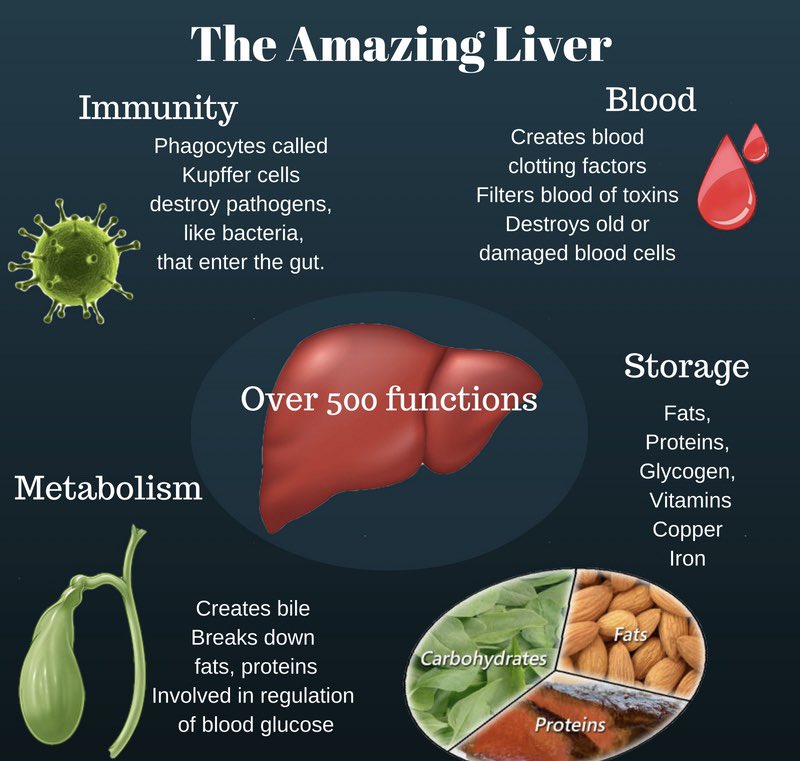 Immunoglobulin complexed AST (“macro‐AST”) in an asymptomatic child with persistent hyper‐transaminasemia. J Pediatr Gastroenterol Nutr
Immunoglobulin complexed AST (“macro‐AST”) in an asymptomatic child with persistent hyper‐transaminasemia. J Pediatr Gastroenterol Nutr
1992;15:458-460.
[PubMed] [Google Scholar]
15.
Levinson M,
Holbert J,
Blackwell C,
Wruble LD. Serum gamma‐glutamyl transpeptidase: its specificity and clinical value. South Med J.
1979;72:837-841.
[PubMed] [Google Scholar]
16.
Moss DW. Alkaline phosphatase isoenzymes. Clin Chem
1982;28:2007-2016.
[PubMed] [Google Scholar]
17.
Fishman WH,
Bardawil WA,
Habib HG,
Anstiss CL,
Green S. The placental isoenzymes of alkaline phosphatase in sera of normal pregnancy. Am J Clin Pathol
1972;57:65-74.
[PubMed] [Google Scholar]
18.
Pratt DS. Evaluation of liver function In: Kasper D, Fauci A, Hauser S, Longo D, Jameson J, Loscalzo J, eds. Harrison’s Principles of Internal Medicine, 19th ed
New York, NY: McGraw‐Hill; 2015.
[Google Scholar]
19.
Monaghan G,
Ryan M,
Seddon R,
Hume R,
Burchell B. Genetic variation in bilirubin UPD‐glucuronosyltransferase gene promoter and Gilbert’s syndrome. Lancet
Lancet
1996;347:578-581.
[PubMed] [Google Scholar]
20.
Robert A,
Chazouilleres O. Prothrombin time in liver failure: time, ratio, activity percentage, or international normalized ratio?
Hepatology
1996;24:1392-1394.
[PubMed] [Google Scholar]
21.
Hultcrantz R,
Glaumann H,
Lindberg G,
Nilsson LH. Liver investigation in 149 asymptomatic patients with moderately elevated activities of serum aminotransferases. Scand J Gastroenterol
1986;21:109-113.
[PubMed] [Google Scholar]
22.
Mathiesen UL,
Franzen LE,
Fryden A,
Foberg U,
Bodemar G. The clinical significance of slightly to moderately increased liver transaminase values in asymptomatic patients. Scand J Gastroenterol
1999;34:85-91.
[PubMed] [Google Scholar]
Liver Function Tests: Purpose, Procedure, and Results
Liver function tests are blood tests that can be used to monitor the health of your liver. Ask the doctor what you need to do to prepare. In some cases you may need to avoid food or certain medications before the test.
Liver function tests, also known as liver chemistries, help determine the health of your liver by measuring the levels of proteins, liver enzymes, and bilirubin in your blood. They can also monitor the progression or treatment of an existing disease.
Depending on the test, either higher- or lower-than-typical levels of these enzymes or proteins can indicate a problem with your liver.
Some of the reasons liver function tests may be performed include screening for diseases such as hepatitis, monitoring the side effects of your medications, and examining the severity of liver disease.
In this article, we take a look at when you might need a liver function test, the different types of tests used, and how to interpret results.
A liver function test is often recommended in the following situations:
- to check for damage from liver infections, such as hepatitis B and hepatitis C, especially if it’s suspected you were exposed to a virus that causes hepatitis
- to monitor the side effects of certain medications because some medications are known to affect the liver, including:
- NSAIDs
- statins
- antibiotics
- antiseizure medications
- tuberculosis drugs
- if you already have liver disease, to monitor the disease and how well a particular treatment is working
- if you’re experiencing the symptoms of a liver disorder or have a family history of a liver disease, such as fatty liver disease
- if you have certain medical conditions, such as:
- high triglycerides
- diabetes
- high blood pressure
- anemia
- if you drink alcohol frequently
- if you have gallbladder disease
Certain tests can reflect different aspects of liver function. For example, elevated alanine transaminase and aspartate transaminase disproportional to bilirubin and alkaline phosphatase levels often indicates liver disease.
For example, elevated alanine transaminase and aspartate transaminase disproportional to bilirubin and alkaline phosphatase levels often indicates liver disease.
Liver function tests are used to measure specific enzymes and proteins in your blood.
Having atypical results on any of these liver tests usually requires a follow-up to determine the cause of the atypical characteristics. Even mildly elevated results can be associated with liver disease.
Common liver function tests include:
Alanine transaminase (ALT) test
Alanine transaminase (ALT) is used by your body to metabolize protein. If the liver is damaged or not functioning properly, ALT can be released into the blood. This causes ALT levels to increase. A higher result than what’s typical on this test can be a sign of liver damage.
It’s estimated that about 10 percent of people in the United States have elevated ALT levels.
Aspartate aminotransferase (AST) test
Aspartate aminotransferase (AST) is an enzyme found in several parts of your body, including your:
- heart
- brain
- pancreas
- liver
- muscles
When the liver is damaged, AST can be released into the bloodstream. A high result on an AST test might indicate a problem with the liver or muscles.
A high result on an AST test might indicate a problem with the liver or muscles.
Since AST levels aren’t as specific of a marker for liver damage as ALT, it’s usually measured together with ALT to check for liver problems. For example, a high AST:ALT ratio may indicate alcoholic liver disease.
Alkaline phosphatase (ALP) test
Alkaline phosphatase (ALP) is an enzyme found in your bones, bile ducts, and liver. An ALP test is typically ordered in combination with several other tests. An ALP test can be used to evaluate the bile duct system of the liver.
Albumin test
Albumin is the main protein made by your liver. It performs many important bodily functions.
For example, albumin nourishes your tissues and transports hormones, vitamins, and other substances throughout your body. An albumin test measures how well your liver is making this particular protein.
Bilirubin test
Bilirubin is a waste product from the breakdown of red blood cells.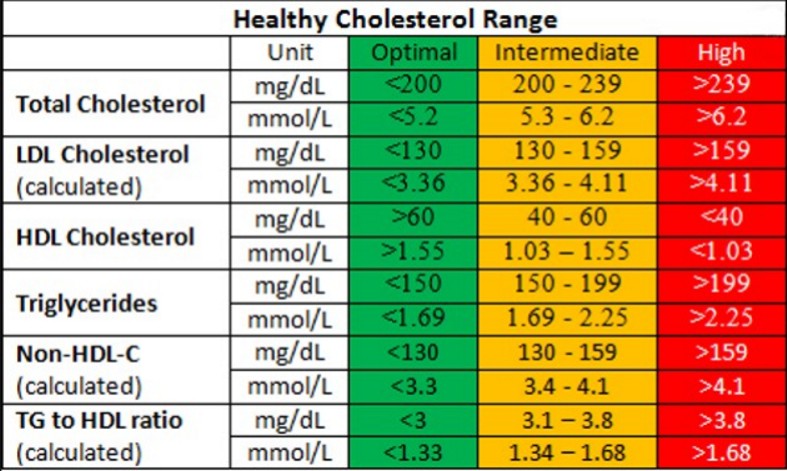 It’s ordinarily processed by the liver. It passes through the liver before being excreted through your stool.
It’s ordinarily processed by the liver. It passes through the liver before being excreted through your stool.
A damaged liver can’t properly process bilirubin. This leads to an atypically high level of bilirubin in the blood. Certain inherited diseases can raise bilirubin levels, even when liver function works as expected.
The following table shows what liver function tests may indicate in terms of higher or lower results than typical. Following any liver function test, you should have a discussion with your doctor about your test results and what they mean for you.
Problems with the liver can make a person very sick and can even be life threatening. Approximately 4.5 million adults in the United States have chronic liver disease.
Symptoms of a liver disorder include:
- weakness
- fatigue or loss of energy
- weight loss
- jaundice (yellow skin and eyes)
- fluid collection in the abdomen, known as ascites
- discolored bodily discharge (dark urine or light stools)
- nausea
- vomiting
- diarrhea
- abdominal pain
- atypical bruising or bleeding
Your doctor may order a liver function test if you’re experiencing symptoms of a liver disorder.
Liver function tests can also monitor the progression or treatment of a disease and test for the side effects of certain medications.
Your doctor will give you complete instructions on how to prepare for the blood sample portion of the test.
Certain medications and foods may affect levels of these enzymes and proteins in your blood. Your doctor may ask you to avoid some types of medications, or they may ask you to avoid eating anything for a period of time before the test. Be sure to continue drinking water prior to the test.
You may want to wear a shirt with sleeves that can easily be rolled up to make it easier for the medical expert to collect the blood sample.
You may have your blood drawn in a hospital or at a specialized testing facility. To administer the test:
- The healthcare technician will clean your skin before the test to decrease the likelihood that any microorganisms on your skin will cause an infection.
- They’ll likely wrap an elastic strap on your arm.
 This will help your veins become more visible. They’ll then use a needle to draw samples of blood from your arm.
This will help your veins become more visible. They’ll then use a needle to draw samples of blood from your arm. - After the draw, the technician will place some gauze and a bandage over the puncture site. Your blood sample will be sent to a laboratory for testing.
Potential risks of a liver function test
Blood draws are routine procedures and rarely cause any serious side effects. However, the risks of giving a blood sample can include:
- bleeding under the skin, or hematoma
- excessive bleeding
- fainting
- infection
Was this helpful?
After the test, you can usually resume everyday activities. However, if you feel faint or lightheaded during the blood draw, you should rest before you leave the testing facility.
The results of these tests may not tell your doctor exactly which condition you have or the degree of liver damage, but they might help your doctor determine the next steps. Your doctor will call you with the results or discuss them with you at a follow-up appointment.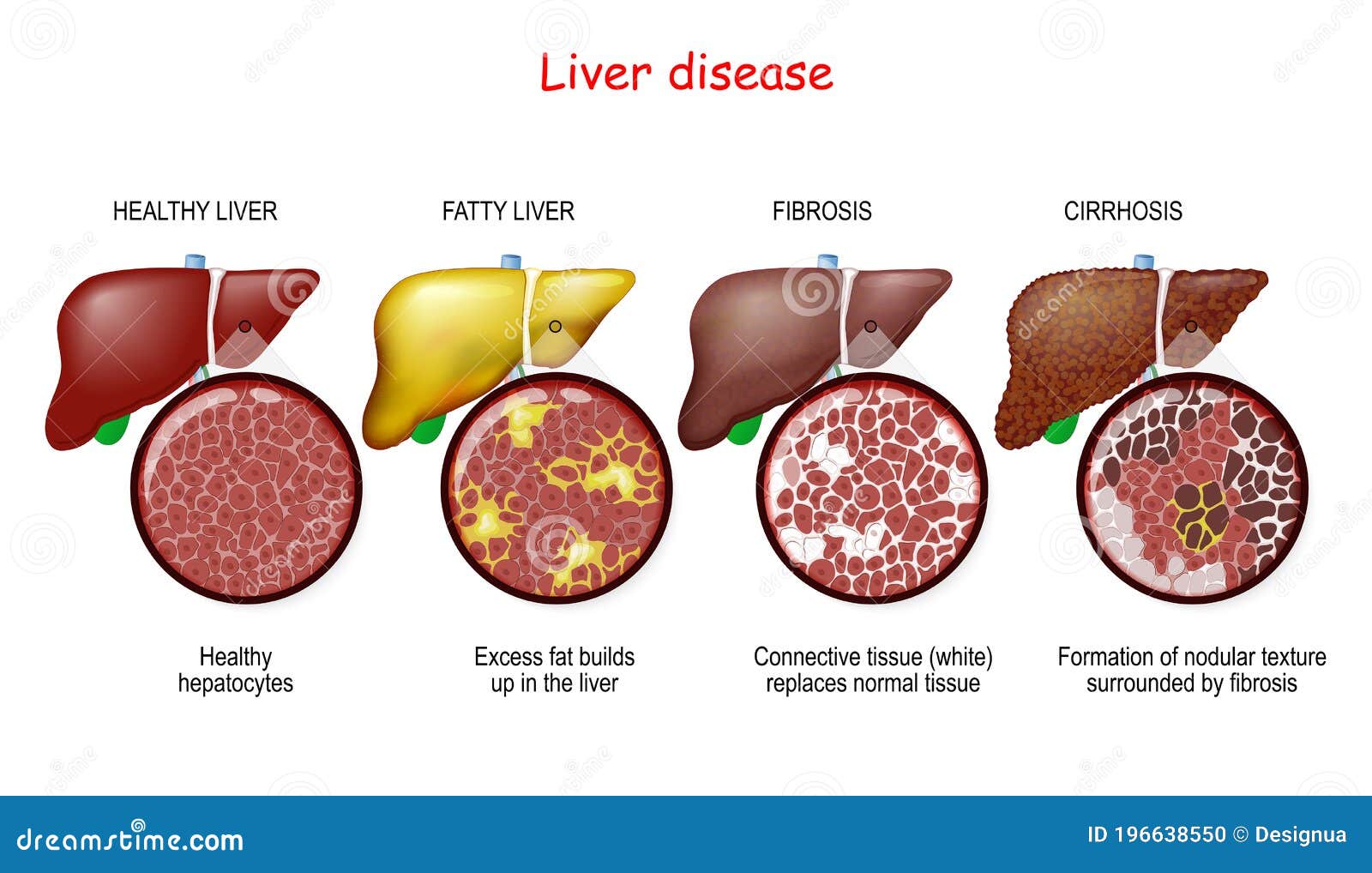
In general, if your results indicate a problem with your liver function, your doctor will review your medications and your past medical history to help determine the cause.
If you drink alcohol frequently, then you’ll need to stop drinking it. If your doctor identifies that a medication is causing the elevated liver enzymes, they’ll advise you to stop the medication.
Other diagnostic tests
Your doctor may decide to test you for hepatitis, other infections, or other diseases that can affect the liver. They may also choose to do imaging tests, like an ultrasound or CT scan.
In addition, they may recommend a liver biopsy to evaluate the liver for fibrosis, fatty liver disease, or other liver conditions.
Liver function tests are blood tests used to help determine the health of your liver. Changes in certain levels of proteins or enzymes can alert doctors of potential problems such as liver cancer, fatty liver disease, or hepatitis.
Liver function tests can also help determine if certain medications are damaging your liver or help you monitor the progression of liver disease.
After you get a liver function test, your doctor can help you interpret the results and discuss what the results mean for you. If they suspect you have liver disease, you may need to undergo other tests such as imaging or a liver biopsy.
Blood tests to check the liver / Gastrohepatocenter EXPERT
Many patients are interested in: how to check the liver and what tests to take before consulting a hepatologist?
If you do not know where to start the examination, then the doctors of the GastroHepatoCenter EXPERT recommend that you contact a hepatologist for a free conversation, who will prescribe a list of indicators that is suitable for your case. This will help you save your resources:
- time – you pass all the necessary indicators in 1 visit to the clinic
- money – you will not hand over what is not needed at the moment.
However, for those who are being screened for prevention or suspected of having liver disease, we have prepared a list of essential blood tests that may be helpful for your doctor to see.
Indications
Comprehensive laboratory analysis of the liver condition is required:
- for symptoms : yellowness of the skin and sclera of the eyes, bitterness in the mouth, nausea, heaviness in the right hypochondrium, chronic fatigue
- with risk factors : overweight or sudden weight loss, sedentary lifestyle, regular consumption of alcohol and heavy meals (suspicion of fatty liver disease)
- if possible infection with viral hepatitis B, C, D is suspected 0013 with a heredity factor of and a suspicion of a genetic disorder in the metabolism of iron, copper
- with a suspicion of autoimmune diseases – this also applies to other organs (thyroid gland, hematopoietic system, etc.)
- for preventive examination .
Prevention of liver diseases is of particular importance, because it has no nerve endings and does not hurt. Therefore, diseases of this organ occur without obvious symptoms.
Therefore, diseases of this organ occur without obvious symptoms.
Basic blood tests for the liver
Among the tests to check liver function, biochemical and virological indicators are key:
- Liver enzymes – AST, ALT analysis . These enzymes are released from liver cells (hepatocytes) when they are damaged. Depending on the activity of the course of the disease, they can even exceed the norm by 50 times.
- GGTP enzymes, alkaline phosphatase . The activity of these enzymes increases in violation of the outflow of bile and congestion (cholestasis). GGTP is also sensitive to alcohol consumption.
- Bilirubin total, direct, indirect . Bilirubin is an intermediate product of hemoglobin processing. One of the stages of hemoglobin metabolism occurs in the liver. If the metabolic process is disturbed due to damage to hepatocytes, excess bilirubin is released into the blood. It is he who gives the icteric color to the skin, mucous membranes and sclera of the eyes.

- Screening for viral hepatitis . Unfortunately, many people do not know that they are infected with viral hepatitis or know, but cannot even guess how the infection occurred. Therefore, an analysis for antibodies to hepatitis C and B is carried out for all patients who seek help from a hepatologist. With a positive analysis, further virological examination is carried out.
- CBC . This is a mandatory analysis for all diseases, showing the state of the body as a whole and the presence of an inflammatory or other pathological process.
In addition, the doctor may prescribe an assessment of the level of copper and iron in the blood with genetic studies (if Wilson-Konovalov’s disease and hemochromatosis are suspected), pancreatic amylase and glucose to assess pancreatic function, screening for autoimmune disorders and others.
The cost of tests for liver diseases
Biochemistry of the liver and blood for hepatitis, the prices for which are listed below, are given strictly on an empty stomach 10-12 hours after the last meal.
In case of any liver disease, the examination should be supplemented by liver ultrasound with elastography. This will give the doctor information about the anatomical features of the organ, its size, location, stage of fibrosis / cirrhosis, and the state of the biliary tract.
To clarify the activity of the course of the disease, the doctor may prescribe fibrotest / fibromax. This is one of the most informative tests for the liver, giving additional information about the stage of fibrosis and steatosis.
Consult a hepatologist with the results of the examination.
Sign up for liver tests
We will call you within 15 minutes and consult on the ongoing tests for the liver
Phone
Reviews
I want to express my deep gratitude to the nurse Olga Valerievna Rudyakova for her kindness and warm attitude. Thanks to such employees, I want to come back here again.
I would also like to note the entire staff of the clinic for their delicate attitude and sensitivity.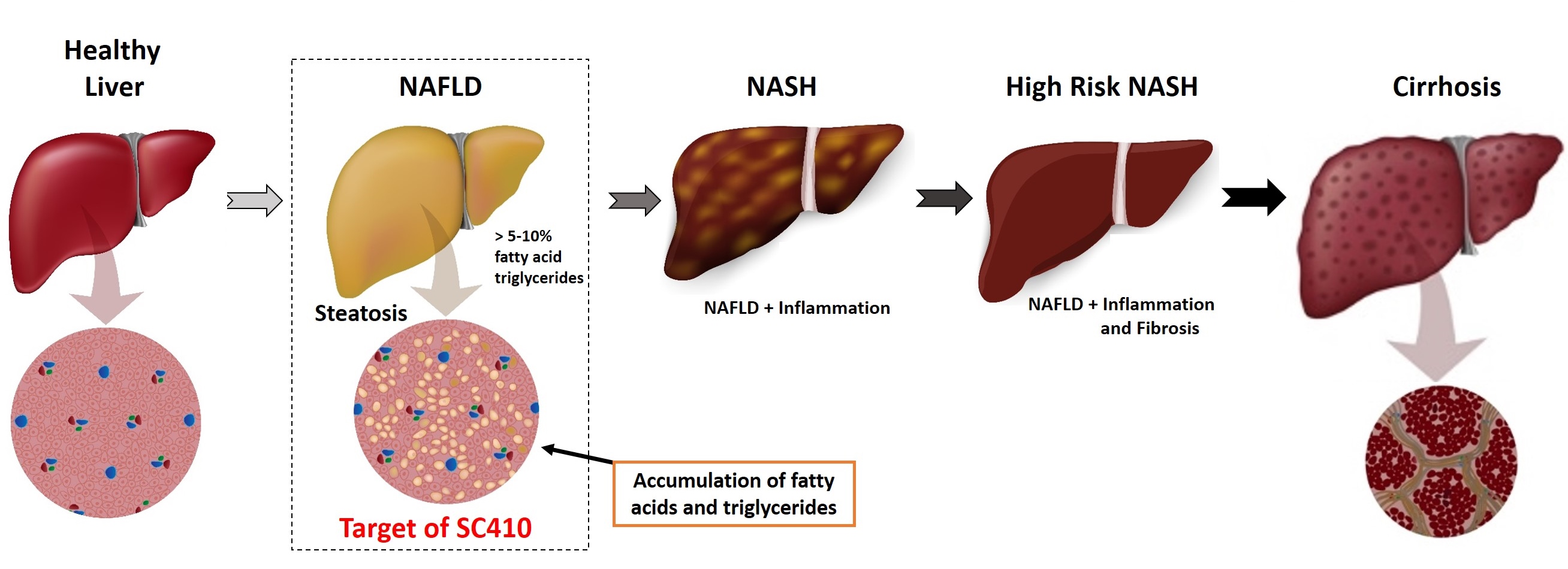 I will definitely recommend the clinic to my friends. Show all
I will definitely recommend the clinic to my friends. Show all
Galkina Lyudmila 05/28/2017
I really liked the service! Quiet, calm, without nerves. All on time and without haste. I came myself, then I brought my husband. Thank you very much, thank you for being you!
М. 20.07.2017
Detailed laboratory examination of the liver
Comprehensive laboratory examination of the liver, including indicators of protein, fat and pigment metabolism, markers of viral hepatitis and tumor marker alpha-fetoprotein (AFP).
Synonyms Russian
Complete laboratory examination of the liver, screening for liver diseases.
English synonyms
Laboratory liver panel, Tests to diagnose liver diseases, Liver check-up.
What biomaterial can be used for research?
Venous blood.
How to properly prepare for an examination?
- Do not eat for 12 hours before the test, you can drink pure non-carbonated water.

- Exclude physical and emotional overexertion within 30 minutes prior to the study.
- Do not smoke for 30 minutes prior to examination.
General information about the study
The liver is the largest gland in the human body. This organ performs about 5,000 different functions, the main of which are the synthesis of proteins, including albumin, globulins and blood coagulation proteins, hormone metabolism, detoxification of harmful substances and metabolic products, the synthesis of cholesterol and glucose, the storage of vitamins and iron, and many others. No wonder, then, that the liver is so prone to disease. Liver diseases can have different etiologies (hereditary metabolic disorders, intoxication, diabetes mellitus, viral infection, autoimmune disorders) and are very common among the population.
Laboratory diagnostics plays a leading role in assessing the condition of the liver. Especially convenient for the doctor and the patient is a comprehensive analysis that includes all laboratory markers of liver disease.
1. To assess the synthetic function of the liver, the concentration of the following clinical and laboratory markers is examined: albumin, blood coagulation factors (coagulogram) and cholesterol.
- Albumin is the main blood protein that performs a transport function and maintains oncotic pressure. In violation of the synthetic function of the liver, the concentration of this protein, as a rule, decreases. It should be noted that this decrease is observed in severe liver diseases, such as fulminant hepatitis and severe liver failure. On the contrary, with torpid or latent liver diseases (hepatitis C, alcoholic hepatitis), the level of total protein may remain within the normal range. In addition, changes in albumin concentration can be observed in many other diseases and conditions, such as starvation, malabsorption, nephrotic syndrome, infectious diseases, and others.
- Quick prothrombin (another name is prothrombin time) and international normalized ratio (INR, INR) are the main indicators used to assess external pathways of blood coagulation (fibrinogen, prothrombin, factor V, VII and X).
 The liver is the main source of synthesis of these factors, and diseases of this organ can be accompanied by a violation of the coagulation mechanism and lead to increased bleeding. Clinically significant disorders of blood coagulation are observed in the late stages of liver disease.
The liver is the main source of synthesis of these factors, and diseases of this organ can be accompanied by a violation of the coagulation mechanism and lead to increased bleeding. Clinically significant disorders of blood coagulation are observed in the late stages of liver disease. - Cholesterol can be synthesized in almost any cell of the body, however, most of it (up to 25%) is synthesized in the liver, from where this compound enters the systemic circulation as part of very low density lipoproteins (VLDL) or into the gastrointestinal tract as part of bile acids . Hypercholesterolemia is a characteristic feature of hepatic cholestasis observed in cholelithiasis, primary sclerosing cholangitis, viral hepatitis, primary biliary cirrhosis, and some other diseases. Hypocholesterolemia has less clinical significance. Different fractions of cholesterol are associated with different effects on human health. Thus, low-density lipoprotein cholesterol (LDL-C) is a well-known risk factor for heart disease, while HDL-C is considered one of the protective factors.

2. In diseases accompanied by a violation of the integrity of hepatocytes (for example, viral hepatitis), hepatic intracellular enzymes are released into the blood and their concentration in the blood increases. This laboratory phenomenon is called cytolysis syndrome. In clinical practice, the liver enzymes ALT and AST are examined to diagnose cytolysis.
- ALT and AST are transaminases that catalyze the transfer of amino groups between amino acids. Although these enzymes can also be found in many other tissues and organs (heart, skeletal muscle, kidneys, brain, red blood cells), changes in their concentration in the blood are more often associated with liver disease, which leads to their name – hepatic transaminases. ALT is a more specific marker of liver disease than AST. With viral hepatitis and toxic liver damage, as a rule, the same increase in the level of ALT and AST is observed. In alcoholic hepatitis, liver metastases, and cirrhosis, there is a more pronounced increase in AST than ALT.

3. To exclude obstruction of the biliary tract by gallstones or tumors (liver, pancreas, papilla of Vater), the total concentration of bilirubin and its fractions, total alkaline phosphatase and gamma-HT are examined.
- Bilirubin is a pigment formed during the breakdown of hemoglobin and some other heme-containing proteins in the liver, spleen and bone marrow. It exhibits toxicity to the nervous system and must be eliminated from the body in the bile or urine. Excretion of bilirubin is a multi-step process in which the liver plays a major role. There are two main fractions of bilirubin: direct and indirect. When bilirubin binds to glucuronic acid, conjugated bilirubin is formed in the liver. Since this type of bilirubin can be determined directly with a direct laboratory test, it is also called direct bilirubin. Bilirubin that has not undergone conjugation with glucuronic acid is called unbound. In laboratory conditions, it is not possible to investigate the level of unbound bilirubin: its concentration is calculated based on the concentrations of total and bound bilirubin.
 For this reason, this type of bilirubin is also called indirect. Total bilirubin consists of both fractions. An increase in the level of bilirubin can be observed in many liver diseases, but the greatest value of this marker lies in the differential diagnosis of jaundice. Hemolytic (prehepatic) jaundice is characterized by an increase in total and indirect bilirubin. For hepatic jaundice, an increase in both fractions (direct and indirect bilirubin) and total bilirubin is typical. Obstructive (subhepatic) jaundice is characterized by an increase in total and direct bilirubin.
For this reason, this type of bilirubin is also called indirect. Total bilirubin consists of both fractions. An increase in the level of bilirubin can be observed in many liver diseases, but the greatest value of this marker lies in the differential diagnosis of jaundice. Hemolytic (prehepatic) jaundice is characterized by an increase in total and indirect bilirubin. For hepatic jaundice, an increase in both fractions (direct and indirect bilirubin) and total bilirubin is typical. Obstructive (subhepatic) jaundice is characterized by an increase in total and direct bilirubin.
- Alkaline phosphatase, ALP, is an enzyme found in the membrane of the biliary pole of hepatocytes, as well as in bone tissue and intestinal cells. The concentration of total alkaline phosphatase is increased in almost 100% of cases of extrahepatic obstruction of the biliary tract. As a rule, complete obstruction is accompanied by a significant increase in total alkaline phosphatase (more than 3-5 times).
 With intrahepatic obstruction, the level of total alkaline phosphatase also increases, but not so sharply (less than 3 times). It should be noted that an increase in total alkaline phosphatase can also be observed in other diseases, such as bone disease, myocardial infarction and sarcoidosis. Therefore, to confirm that the cause of the increase in the level of total alkaline phosphatase is precisely the liver disease, it is advisable to conduct an additional study – an analysis for gamma-HT.
With intrahepatic obstruction, the level of total alkaline phosphatase also increases, but not so sharply (less than 3 times). It should be noted that an increase in total alkaline phosphatase can also be observed in other diseases, such as bone disease, myocardial infarction and sarcoidosis. Therefore, to confirm that the cause of the increase in the level of total alkaline phosphatase is precisely the liver disease, it is advisable to conduct an additional study – an analysis for gamma-HT.
- Gamma-glutamyl transpeptidase, gamma-GT is also a membrane-bound liver enzyme that catalyzes the transfer of the gamma-glutamyl group of glutathione to other molecules. Gamma-HT is currently the most sensitive marker of liver disease. An increase in gamma-HT levels is the earliest sign of liver damage. An increase in the concentration of gamma-HT can be observed in all liver diseases, but the greatest value of this marker is in the diagnosis of biliary tract obstruction. With obstruction of the biliary tract, the concentration of gamma-HT increases by 5-30 times.
 The study of the level of gamma-HT allows you to make sure that the increase in total alkaline phosphatase is caused precisely by liver disease, and not by other causes, primarily diseases of the skeletal system. As a rule, with obstruction of the biliary tract, there is a parallel increase in the level of gamma-HT and total alkaline phosphatase. High levels of gamma-HT are characteristic of liver metastases and alcoholic cirrhosis. In viral hepatitis, there is a moderate increase in the level of gamma-HT (2-5 times). It should be noted that an increase in total ALP and gamma-HT is also observed in obstruction of the biliary tract caused by diseases of the pancreas (cancer of the pancreatic head).
The study of the level of gamma-HT allows you to make sure that the increase in total alkaline phosphatase is caused precisely by liver disease, and not by other causes, primarily diseases of the skeletal system. As a rule, with obstruction of the biliary tract, there is a parallel increase in the level of gamma-HT and total alkaline phosphatase. High levels of gamma-HT are characteristic of liver metastases and alcoholic cirrhosis. In viral hepatitis, there is a moderate increase in the level of gamma-HT (2-5 times). It should be noted that an increase in total ALP and gamma-HT is also observed in obstruction of the biliary tract caused by diseases of the pancreas (cancer of the pancreatic head).
4. The liver is one of the organs in which iron is stored. In the presence of a genetic defect in iron metabolism (primary hemochromatosis), as well as in chronic iron overload (secondary hemochromatosis: multiple blood transfusions, chronic hemolytic anemia), there is an excessive accumulation of iron in the liver and other tissues, which ultimately leads to the development of liver failure. When examining a patient with signs of liver failure, one should always be aware of hemochromatosis. To exclude it as a cause of liver damage, the level of iron in the blood is examined. It is elevated in hemochromatosis.
When examining a patient with signs of liver failure, one should always be aware of hemochromatosis. To exclude it as a cause of liver damage, the level of iron in the blood is examined. It is elevated in hemochromatosis.
5. Viral hepatitis (B and C) is very common in the general population. Often they are asymptomatic or with minimal symptoms (weakness, heaviness in the right hypochondrium) and therefore remain unrecognized. On the other hand, over time, chronic hepatitis can lead to the development of liver cirrhosis and hepatocellular carcinoma. For this reason, all patients should be tested for hepatitis, especially those at risk for these diseases (living in a region with a high prevalence of viral hepatitis B and C, including in Russia, injecting drug use, homosexual sexual contacts, hemodialysis, HIV – infection, change of sexual partners, etc.). This comprehensive analysis included the main markers of hepatitis: antibodies to hepatitis C virus (anti-HCV) and hepatitis B surface antigen (HBsAg).
6. If liver cancer is suspected, the level of alpha-fetoprotein (AFP) is examined. AFP is a tumor marker for hepatocellular carcinoma. In this disease, the level of AFP, as a rule, exceeds 400 ng / ml.
This comprehensive analysis allows you to comprehensively assess the condition of the liver and exclude its underlying diseases. In some situations, however, additional research may be required.
What is research used for?
- For evaluation of function and early diagnosis of liver diseases.
When is the test ordered?
- At a preventive examination;
- in the presence of symptoms of diseases of the liver, gallbladder and bile ducts: pain or discomfort in the right hypochondrium, nausea, stool disorders, darkening of urine color, jaundice, edema, increased bleeding, fatigue;
- when observing a patient receiving hepatotoxic drugs for any disease (methotrexate, tetracyclines, amiodarone, valproic acid, salicylates).

What do the results mean?
Reference values
For each indicator included in the complex:
- [03-007] Coagulogram No. 1 (prothrombin (according to Quick), INR)
- [06-003] Alanine aminotransferase (ALT)
- [06-004] Serum albumin
- [06-010] Aspartate aminotransferase (AST)
- [06-013] Gamma-glutamyl transpeptidase (gamma-GT)
- [06-017] Serum iron
- [06-036] Bilirubin total
- [06-037] Bilirubin direct
- [06-045] General alkaline phosphatase
- [06-048] Cholesterol, total
- [07-009] anti-HCV, antibodies
- [07-025] HBsAg
- [08-016] Alpha-fetoprotein (alpha-FP)
- [30-002] Bilirubin indirect
Important Notes
- To obtain an accurate result, follow the test preparation guidelines;
- the results of the study are evaluated taking into account additional anamnestic, instrumental and laboratory data.

Also recommended
[40-085] Viral hepatitis B. Control of viral activity before treatment
[40-091] Viral hepatitis C. Tests before treatment interferon and Ribavirin
[13-022] Antibodies to the microsomal fraction of the liver and kidneys (anti-LKM)
[13-021] Anti-mitochondrial antibodies (AMA)
[13-068] Antibodies to autoimmune liver disease antigens (antibodies to liver-kidney microsomes type 1 (LKM-1), mitochondrial pyruvate decarboxylase complex (PDC/M2) ), cytosolic antigen (LC-1) and soluble liver antigen (SLA/LP))
[13-069] Extended serology of autoimmune liver diseases
[12-005] Cytological examination of material obtained during surgery
Who appoints a study?
Therapist, general practitioner, infectious disease specialist, gastroenterologist, hepatologist.
Literature
- McPhee S.J., Papadakis M. CURRENT Medical Diagnosis and Treatment / S.



 This will help your veins become more visible. They’ll then use a needle to draw samples of blood from your arm.
This will help your veins become more visible. They’ll then use a needle to draw samples of blood from your arm.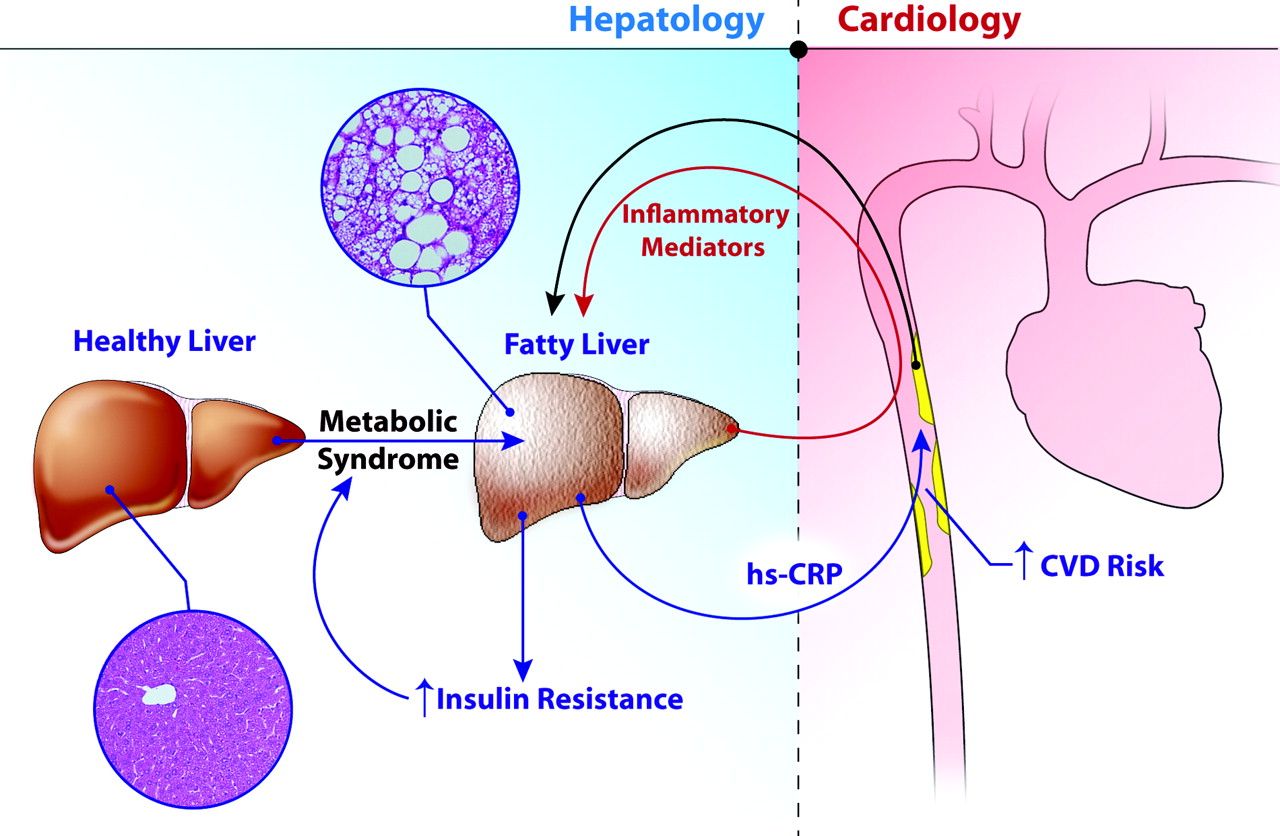

 The liver is the main source of synthesis of these factors, and diseases of this organ can be accompanied by a violation of the coagulation mechanism and lead to increased bleeding. Clinically significant disorders of blood coagulation are observed in the late stages of liver disease.
The liver is the main source of synthesis of these factors, and diseases of this organ can be accompanied by a violation of the coagulation mechanism and lead to increased bleeding. Clinically significant disorders of blood coagulation are observed in the late stages of liver disease.

 For this reason, this type of bilirubin is also called indirect. Total bilirubin consists of both fractions. An increase in the level of bilirubin can be observed in many liver diseases, but the greatest value of this marker lies in the differential diagnosis of jaundice. Hemolytic (prehepatic) jaundice is characterized by an increase in total and indirect bilirubin. For hepatic jaundice, an increase in both fractions (direct and indirect bilirubin) and total bilirubin is typical. Obstructive (subhepatic) jaundice is characterized by an increase in total and direct bilirubin.
For this reason, this type of bilirubin is also called indirect. Total bilirubin consists of both fractions. An increase in the level of bilirubin can be observed in many liver diseases, but the greatest value of this marker lies in the differential diagnosis of jaundice. Hemolytic (prehepatic) jaundice is characterized by an increase in total and indirect bilirubin. For hepatic jaundice, an increase in both fractions (direct and indirect bilirubin) and total bilirubin is typical. Obstructive (subhepatic) jaundice is characterized by an increase in total and direct bilirubin. With intrahepatic obstruction, the level of total alkaline phosphatase also increases, but not so sharply (less than 3 times). It should be noted that an increase in total alkaline phosphatase can also be observed in other diseases, such as bone disease, myocardial infarction and sarcoidosis. Therefore, to confirm that the cause of the increase in the level of total alkaline phosphatase is precisely the liver disease, it is advisable to conduct an additional study – an analysis for gamma-HT.
With intrahepatic obstruction, the level of total alkaline phosphatase also increases, but not so sharply (less than 3 times). It should be noted that an increase in total alkaline phosphatase can also be observed in other diseases, such as bone disease, myocardial infarction and sarcoidosis. Therefore, to confirm that the cause of the increase in the level of total alkaline phosphatase is precisely the liver disease, it is advisable to conduct an additional study – an analysis for gamma-HT. The study of the level of gamma-HT allows you to make sure that the increase in total alkaline phosphatase is caused precisely by liver disease, and not by other causes, primarily diseases of the skeletal system. As a rule, with obstruction of the biliary tract, there is a parallel increase in the level of gamma-HT and total alkaline phosphatase. High levels of gamma-HT are characteristic of liver metastases and alcoholic cirrhosis. In viral hepatitis, there is a moderate increase in the level of gamma-HT (2-5 times). It should be noted that an increase in total ALP and gamma-HT is also observed in obstruction of the biliary tract caused by diseases of the pancreas (cancer of the pancreatic head).
The study of the level of gamma-HT allows you to make sure that the increase in total alkaline phosphatase is caused precisely by liver disease, and not by other causes, primarily diseases of the skeletal system. As a rule, with obstruction of the biliary tract, there is a parallel increase in the level of gamma-HT and total alkaline phosphatase. High levels of gamma-HT are characteristic of liver metastases and alcoholic cirrhosis. In viral hepatitis, there is a moderate increase in the level of gamma-HT (2-5 times). It should be noted that an increase in total ALP and gamma-HT is also observed in obstruction of the biliary tract caused by diseases of the pancreas (cancer of the pancreatic head).

